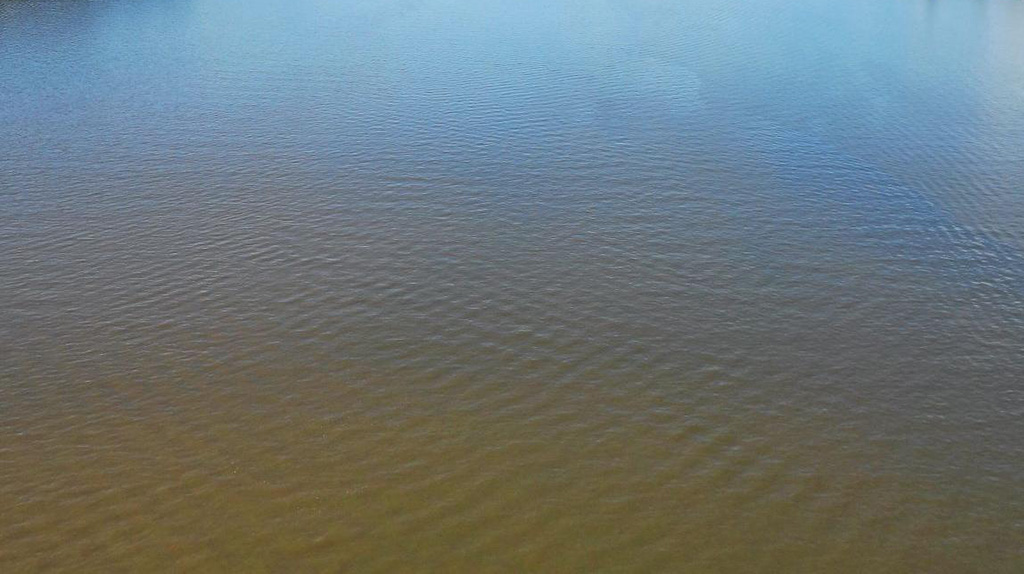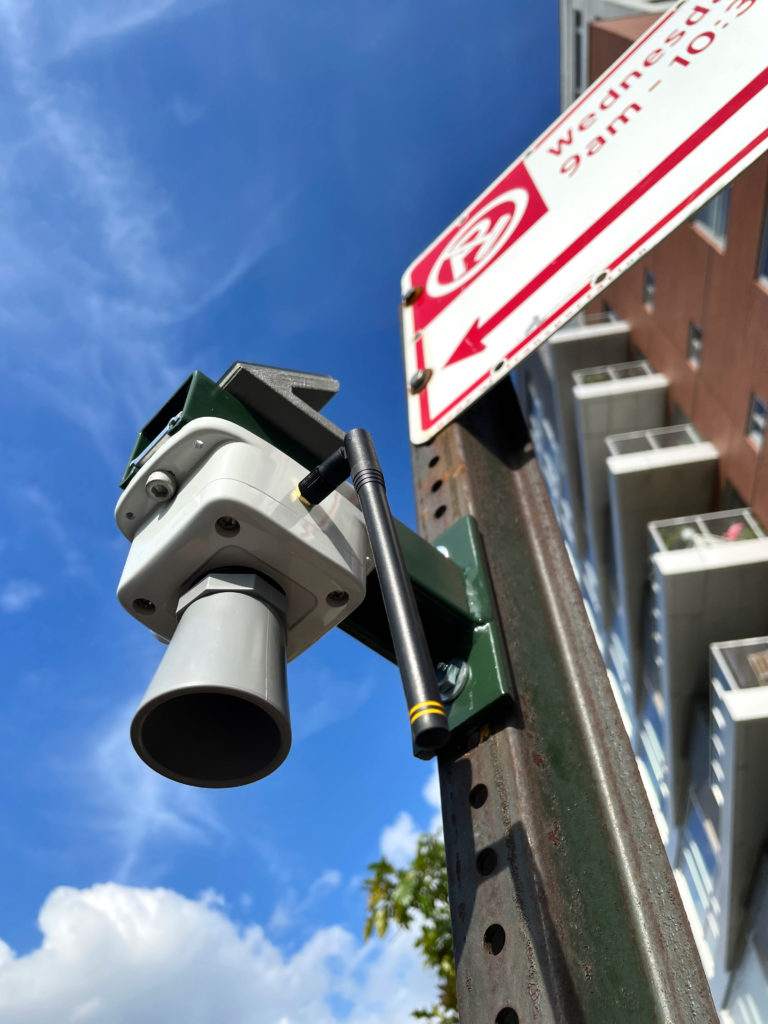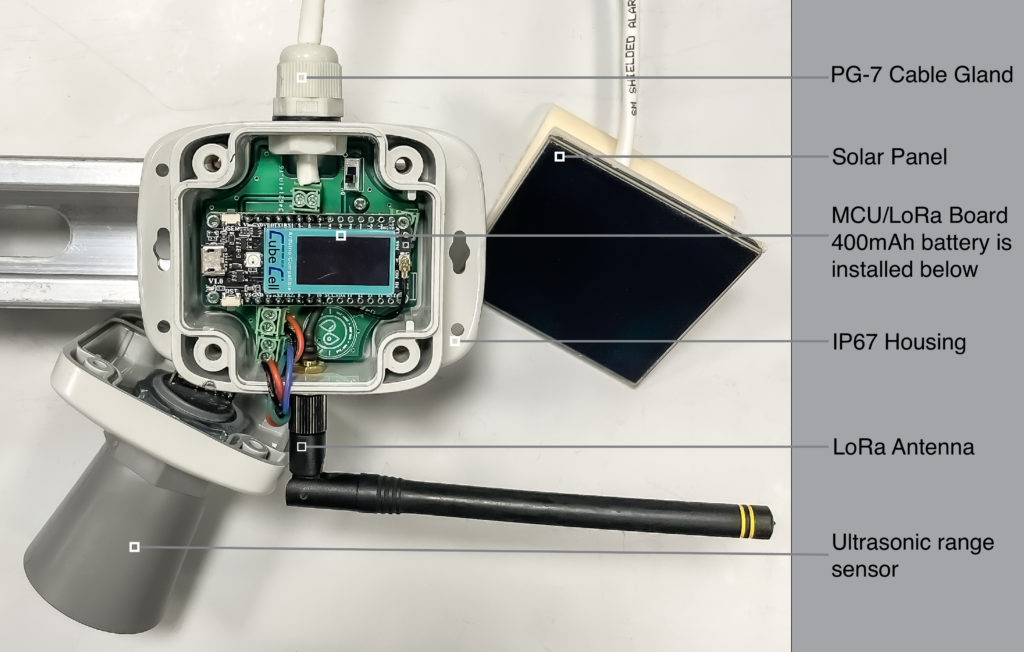
Methodology

Real-time flood sensors were developed by the FloodSense project at NYU and the CUNY Advanced Science Research Center (ASRC), with a goal of providing information on the presence, frequency, and depth of hyperlocal street-level flood events to a range of stakeholders, including policymakers, government agencies, citizens, emergency response teams, community advocacy groups, and researchers.
How the sensors were designed
Low-cost
Designed to be low-cost to allow the deployment of a large network of sensors.
Open source
Easy to construct with an open-source design to allow participation in their construction and deployment. The code is all on Github.
Multiple use cases
Flexible for multiple use cases and installation scenarios including self-sufficiency in regards to power and data transmission, to allow the sensors to stand alone for ease of deployment.

For both the NYU and CUNY sensors, an ultrasonic-based sensor was chosen after assessment of multiple direct and remote sensor options, given their low cost and feasibility of deployment. The current iteration of the sensor consists of a low-power microcontroller with integrated LoRaWAN radio, a 2200 mAh battery, a solar controller and 1.2W solar panel, and a Maxbotix industrial grade range sensor.
The CUNY sensor includes a 6” diameter, 8’ tall PVC pipe resting on the ground with the sensor mounted at the top pointing down the pipe interior. This approach can help to reduce anomalous measurements caused by items left below the sensor.
Since the beginning of the sensor design process, the team has consulted with city agencies and community partners to understand sensor use cases, design needs, and deployment locations, which has informed all aspects of the sensor program. Permission to deploy sensors on-street infrastructure has been given by the NYC Department of Transportation. Sensors have been deployed in the Gowanus area of Brooklyn, a neighborhood prone to flooding from the overflow of inundated combined stormwater sewers, and neighborhoods in the Jamaica Bay watershed that are susceptible to tidal-influenced flooding.